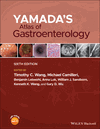Small intestine: anatomy and structural anomalies
Summary
The mesentery of the small intestine attains a broad-based attachment to the posterior abdominal wall and extends from the duodenojejunal junction to the ileocecal region. In this chapter, a brief review of the main features of the common congenital anomalies is presented and illustrated with pictures of surgical specimens. Meckel diverticulum is the most common congenital anomaly of the gastrointestinal tract. Duplications of the gastrointestinal tract are rare congenital cystic anomalies attached to the intestinal mesenteric border. Gastroschisis occurs when there is a small defect in the abdominal wall, usually to the right of the umbilicus, through which there is massive evisceration of the intestines. Volvulus is abnormal twisting of the intestine around the axis of its own mesentery, resulting in obstruction of the more proximal bowel.



